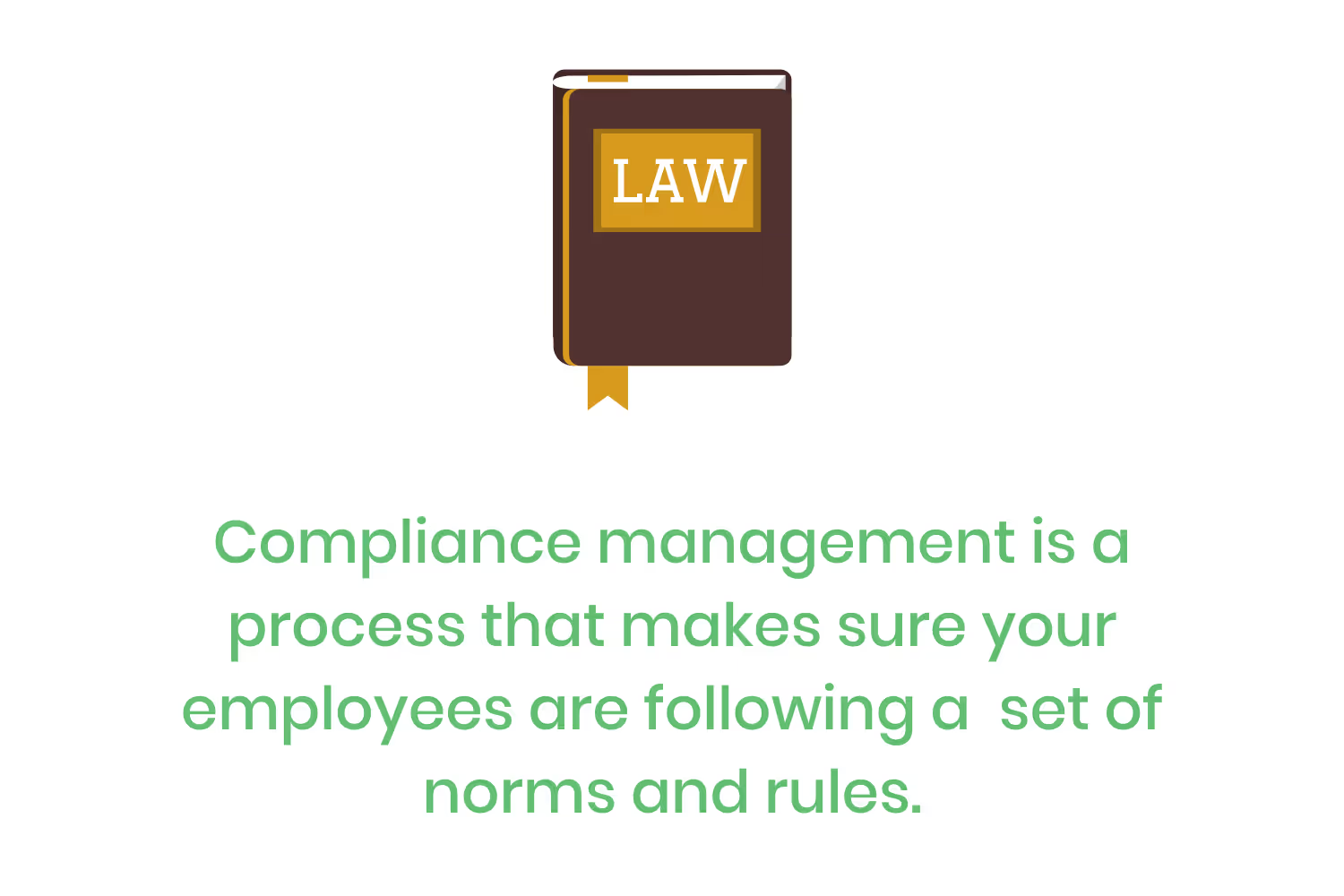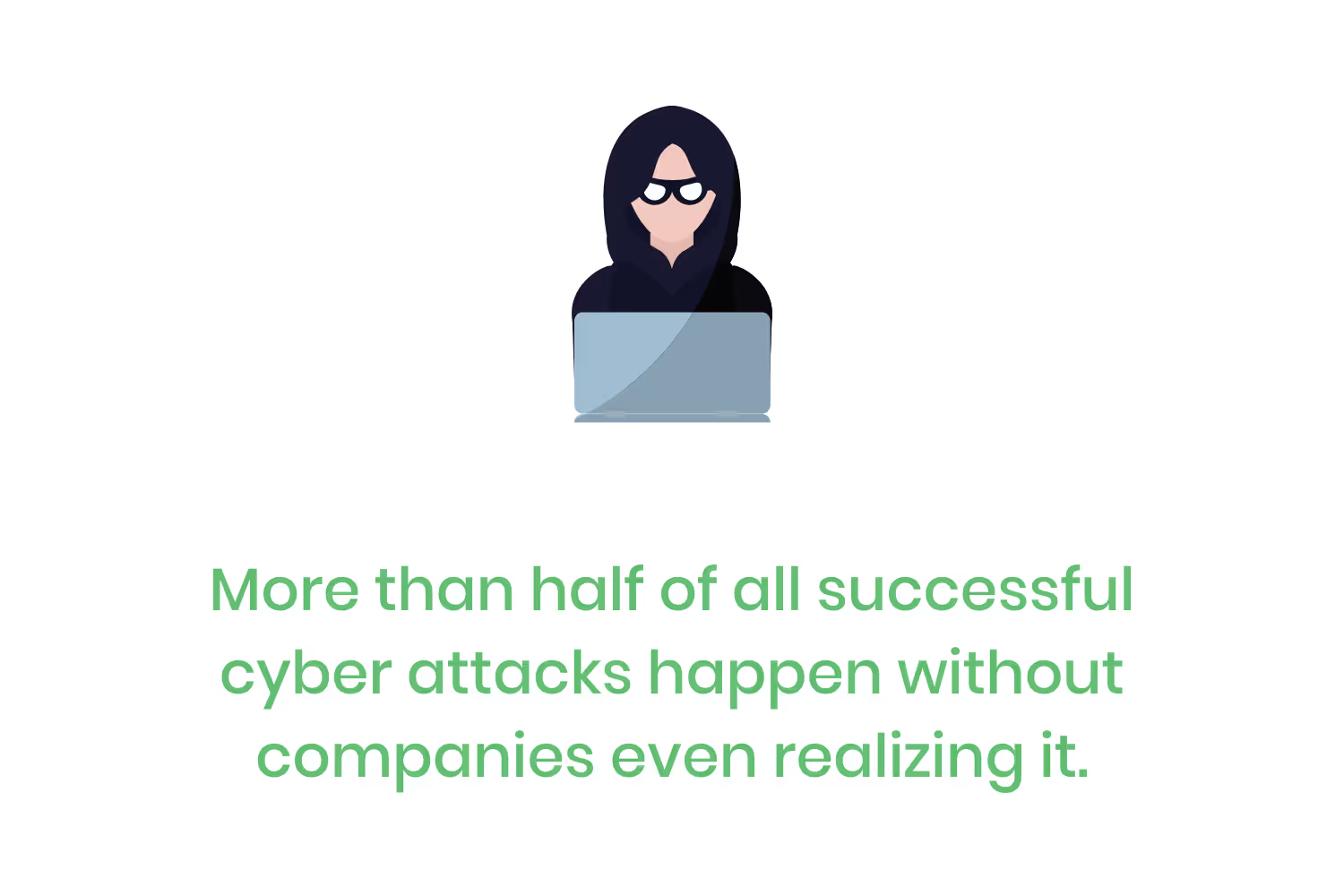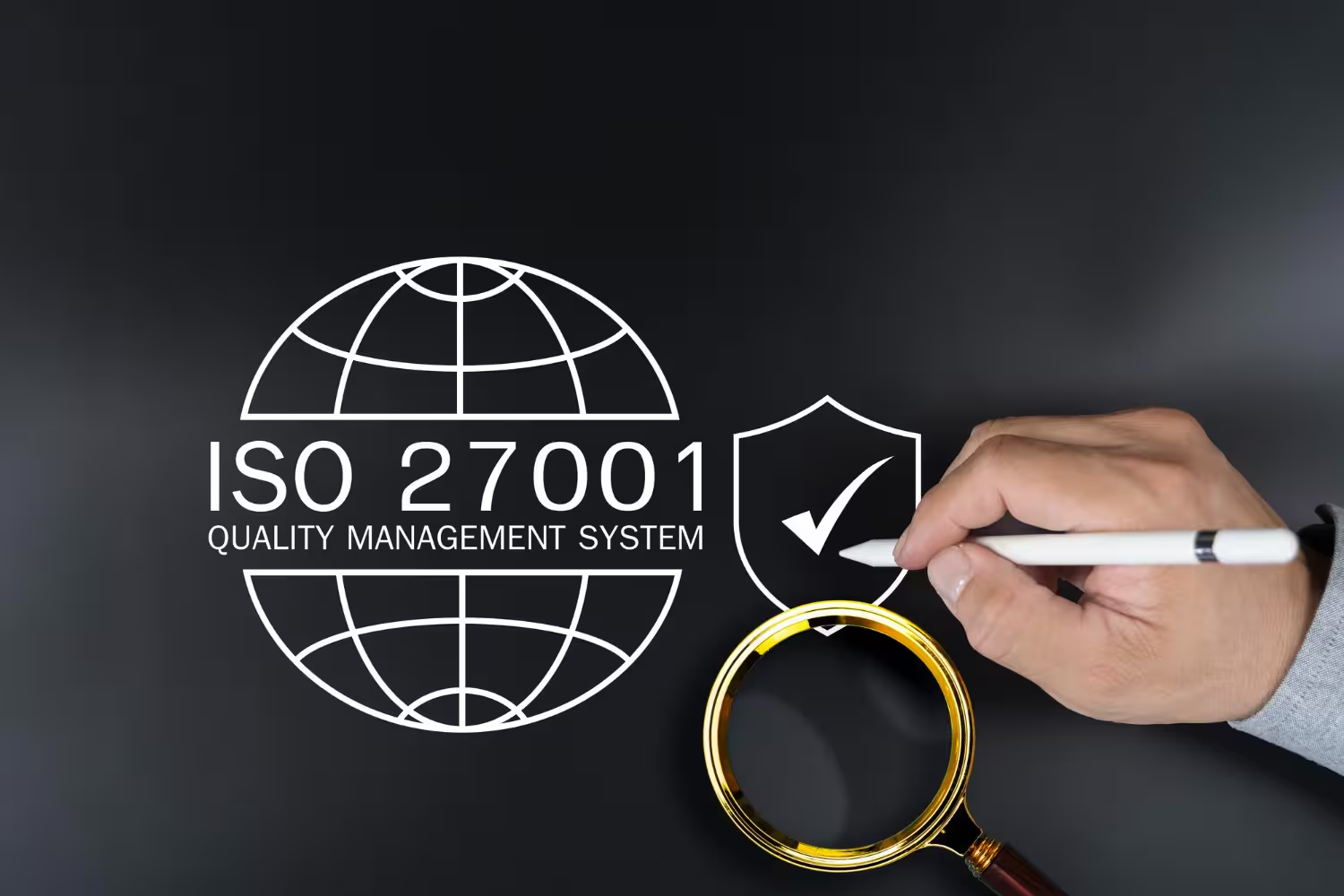What The Perfect Software for Compliance Management Looks Like
Whether you’re an organization looking to switch solutions or just now realizing the benefits of compliance management software, here’s what you should look for.

If you boil it down to its essentials, compliance management is nothing more than a process that makes sure your employees are following a given set of norms and rules.
That barebones definition makes it sound way simpler than it is, though. In a separate post, I broke down what it means to be HIPAA compliant so I won’t go off on a huge tangent to back up my claim.
Simply put, though, laws aren’t as straightforward as they seem. They’ll lay out their definitions and requirements only to leave room for ambiguity. That’s nothing new, laws and regulations always have a grey area that’s left there for lawyers to interpret and judges to set precedent for.
Of course, it’s not realistic for organizations to consult with a lawyer with every business decision they make. That would require way too much time and resources by both parties.
That’s where compliance management comes in. It can be a blend of…
- Policies
- Documentation
- Procedures
- Internal auditing
- Security controls
- Technological enforcements
In the past, this meant hiring on a person who would sit down with each of your employees and tell them what is and isn’t allowed according to the regulations enforced upon your organization. It also included them drafting policies and enforcing them by barging into your employees’ offices.

This is how organizations ensured that their workforces kept legality in mind while conducting business. The reality for many small businesses, though, was that they’d draft polices and then leave them on a shelf and only use them if an issue arose, until the internet arrived.
The internet made it so businesses of all kinds could boost their productivity, enhance their daily operations and connect with their clients. It became easier than ever to send and receive important information.
Instead of keeping data physically, companies started going paperless and converting everything digitally. But this also opened up a plethora of new vulnerabilities.
The severity of the digital exploitations put a microscope on organizations that have to work in compliance with regulations. In other words, businesses of all sizes have to ensure that they’re following certain regulations and be able to provide evidence at a moments notice.
Thus, technology companies started to develop software for compliance management. What’s sometimes referred to as Enterprise Governance, Risk and Compliance (EGRC) is an industry now worth $32.6 billion and showing no signs of slowing down.
Whether you’re an organization looking to switch solutions or just now realizing the benefits of compliance management software, here’s what you should look for.
Encourages Collaboration
No one knows your organization better than yourself.
Whether you’re the founder or a part of the upper-management team, you know the in’s and out’s of your business’ daily accomplishments.
But, you might not have a firm grasp of the regulations you have to adhere to. That’s why you’re looking for an organization to provide you assistance with compliance management.
The unfortunate reality, though, is that the extent of service you’ll get with some vendors starts and ends with providing you the software.
They’ll have a salesperson present to you their “state of the art” and it’ll blow you away with all of its bells and whistles. Naturally, you’re sold that this is the tool you’ve been waiting for to help solve your regulatory woes.
You sign the contract for an annual payment consisting of thousands of dollars, they give you your user license and vanish. I’m using the word “vanish” in a figurative sense. I’m not saying that they took your money and disappeared. Instead, I’m referring to them putting up a wall the moment you become their customer.

As soon as they get that signed contract from you, they leave you to your own devices. The only way to get help from them is through frustrating customer service phone calls or online, time-limited chats.
The experience I’m describing is not what you want to have happen when you’ve chosen your compliance management software.
Instead, you want your new business partner to actively communicate with you during every phase of establishing your new regulatory environment. It doesn’t matter how many features a solution has if you don’t know how to use them.
In other words, they need to encourage consistent collaboration with your entire team. The beginning stages of compliance are the most important. If your team doesn’t know how to work within the boundaries of the regulations placed on your business, you’re bound to run into a violation.
The starting point in the hunt for the perfect software for compliance management starts outside of the solution itself. The vendor that’s offering their service to you needs to meet with department heads. That way they’ll be able to evaluate your current compliance environment and find out the best way to integrate their software into your organization.
Brings Legality to The Forefront
Compliance isn’t stagnant. It’s organic in nature and changes often.
Yet it’s a common misconception is that once you draft your policies the first time you’ll never have to revisit them again. But, government mandates get changed and amended constantly.
Bank regulations alone change every 12 minutes.
Yet almost 70% of executives aren’t confident that their current risk management practices will be enough to meet future needs.
Seeing those two statistics one after the other is scary. The second study doesn’t mention what kind of organizations that those 70% of executives are a part of. But it furthers the point I’m trying to make during this section so it makes sense to put those two together to reinforce it.
My point after all of this is to prove that, unless you’re in banking, it’s safe to assume that compliance isn’t one of your biggest priorities.
If that’s the case, you have problem. But, it’s fixable.

This problem doesn’t mean that you don’t care about whether or not you’re abiding by government regulations. Instead, it means that you’re either too busy or don’t have an easy way to remind yourself.
Regardless of which of those you fall under, the perfect software for compliance management should be able to solve these problems for you.
Most of the time, it’s a matter of bringing a law’s safeguards to the forefront of your priorities.
How does that happen?
Well, the software you choose should be able to alert you when there are compliance actions that need completed.
That means there should be time-related functionality such as...
- Setting deadlines
- Keeping track of time
- Receiving alerts
- Assigning responsibility to another staff member
We forget nearly 90% of new information within a week. In other words, it’s paramount that the management software you choose offers features to help keep compliance in your list of priorities.
Automated Policy Formatting and Enforcing
There are three main aspects involved in policies; drafting, enforcing and proving.
First, drafting involves sitting down with your on-staff compliance personnel and discussing what is and isn’t allowed at your organization. It’s a long and arduous process. But, as I mentioned in the previous section, a “set it and forget it” mentality won’t work.
Second, enforcing policies on your workforce requires communication, patience and consistency. Some of the biggest regulations state that they require training on their employees, albeit ambiguously.
But, you’re required to work with your team consistently to ensure that they understand how to work properly at your organization by any means necessary.
Third, the most difficult aspect of your organizational policies is proving that you follow them. At some point, you’ll come in contact with an auditor. The auditor will request proof that you’ve created policies that line up with the requirements defined within the law(s) you have to abide by.

This sounds easier than it is, especially if you start to think about the length of some of the most comprehensive government regulations.
The compliance management software you choose should ultimately offer capabilities that automate these processes.
It should allow you to import the polices you make and cross-reference them to the individual safeguards within a regulation. This makes it easier to draft more comprehensive policies and prove that you’re compliant to an auditor.
It should also make it easy for you to enforce your policies. Let’s say you’re a healthcare organization and you’ve decided to retrain your employees on the Health Insurance Portability and Accountability Act (HIPAA) on an annual basis. The software should be able to keep track of this entire process from beginning to end.
Vendor Risk Management
It doesn’t matter what industry you work within, you use a variety of vendors and partners in order to make your job easier.
A study from Cisco found that the average company shares its data with 730 different vendors and third-parties.
Maybe they provide you with…
- Raw materials that you synthesize into your final product
- Tools and instruments to perform your duties
- Software to make your team more productive

Having vendors is a major part of doing business, it’s that simple. Unfortunately, though, having them also presents a huge risk to your organization. Almost one-third of all HIPAA violations are the result of third-party vendors.
In order to prevent facing a security breach caused by vendor all you have to do is spend more time during your evaluation phase, right?
Well, it’s not that easy. But, you already know that.
When everyday organizations need to find a customer relationship management (CRM) tool they reach out to a few places for a demonstration and make their choice.
When an organization that has to stay within the confines of a particular law looks for a new vendor, it’s a little bit different. I’ve mentioned it throughout this blog post multiple times already so let’s stick with talking about HIPAA.

The equivalent to a CRM in the healthcare space is an electronic health record (EHR) system. EHR’s help doctors, nurses and other medical workers keep track of all of their patient’s care, prescriptions, etc.
In other words, it stores some of the most sensitive information on the planet.
Thus, picking an EHR vendor is an involved process with a ton of moving parts. It requires purchasing contracts, business associate agreements (BAA), training materials, access after termination affidavits, etc. In most cases, after a healthcare organization sees an EHR they like they send questionnaires to the vendor about data security.
My point after all of this is that the perfect software for compliance management keeps all vendor information, agreements and materials in one place.
It also allows users to create, distribute and score questionnaires sent out to both prospective and existing vendors.
Incident Response Reporting
When a breach happens at your organization, will you notice it right away? If you’re in the majority, probably not.
More than half of all successful cyber attacks happen without companies even realizing it. Sure, that statistics is more of an issue for your IT department and it’s cybersecurity-related.

What about a breach that’s not related to cybersecurity?
Well, it takes an average of 197 days before the average company realizes that there was a breach of any kind.
Here’s why.
Let’s say you’re the owner of a large healthcare facility located at the heart of Los Angeles, California. As a result, your organization would see a ton of traffic from celebrities.
OK, so you’ve just got done reprimanding one of your employees for coming in late. After you’ve spoken with them they head to their desk disgruntled, log in to your organization’s EHR and start to look up the medical records of celebrities you’ve treated. This is a blatant violation of HIPAA’s privacy law.
If that scenario were to happen, how long would it take before your team realized the illegal activity happening within your system? That’s a rhetorical question.

The point of this section is to prove that you could have all every compliance safety measure in place, yet a breach still occurs. There are just too many variables involved, you can’t be invulnerable to violations.
Thus, the compliance management software you choose should have incident reporting functionality. This means gathering all of the necessary data and formatting it into a readable, distributable format. The format used for these reports should coincide with what the governmental entity you report to requires.
Conclusion
Even after you’ve found the perfect software for compliance management at your organization, it won’t solve all of your problems.
After all, it’s only a tool to help you with your regulatory landscape. In order to tackle compliance, it takes the right…
- Amount of collaboration
- Types of distributive mediums
- Methods to measure understanding
Your new piece of software will undoubtedly save you a lot of time in all three of these aspects through automation. Thus, you’ll see an increase in efficiency and ensure that compliance is at the forefront of your organization’s priorities.
Emphasize your product's unique features or benefits to differentiate it from competitors
In nec dictum adipiscing pharetra enim etiam scelerisque dolor purus ipsum egestas cursus vulputate arcu egestas ut eu sed mollis consectetur mattis pharetra curabitur et maecenas in mattis fames consectetur ipsum quis risus mauris aliquam ornare nisl purus at ipsum nulla accumsan consectetur vestibulum suspendisse aliquam condimentum scelerisque lacinia pellentesque vestibulum condimentum turpis ligula pharetra dictum sapien facilisis sapien at sagittis et cursus congue.
- Pharetra curabitur et maecenas in mattis fames consectetur ipsum quis risus.
- Justo urna nisi auctor consequat consectetur dolor lectus blandit.
- Eget egestas volutpat lacinia vestibulum vitae mattis hendrerit.
- Ornare elit odio tellus orci bibendum dictum id sem congue enim amet diam.
Incorporate statistics or specific numbers to highlight the effectiveness or popularity of your offering
Convallis pellentesque ullamcorper sapien sed tristique fermentum proin amet quam tincidunt feugiat vitae neque quisque odio ut pellentesque ac mauris eget lectus. Pretium arcu turpis lacus sapien sit at eu sapien duis magna nunc nibh nam non ut nibh ultrices ultrices elementum egestas enim nisl sed cursus pellentesque sit dignissim enim euismod sit et convallis sed pelis viverra quam at nisl sit pharetra enim nisl nec vestibulum posuere in volutpat sed blandit neque risus.

Use time-sensitive language to encourage immediate action, such as "Limited Time Offer
Feugiat vitae neque quisque odio ut pellentesque ac mauris eget lectus. Pretium arcu turpis lacus sapien sit at eu sapien duis magna nunc nibh nam non ut nibh ultrices ultrices elementum egestas enim nisl sed cursus pellentesque sit dignissim enim euismod sit et convallis sed pelis viverra quam at nisl sit pharetra enim nisl nec vestibulum posuere in volutpat sed blandit neque risus.
- Pharetra curabitur et maecenas in mattis fames consectetur ipsum quis risus.
- Justo urna nisi auctor consequat consectetur dolor lectus blandit.
- Eget egestas volutpat lacinia vestibulum vitae mattis hendrerit.
- Ornare elit odio tellus orci bibendum dictum id sem congue enim amet diam.
Address customer pain points directly by showing how your product solves their problems
Feugiat vitae neque quisque odio ut pellentesque ac mauris eget lectus. Pretium arcu turpis lacus sapien sit at eu sapien duis magna nunc nibh nam non ut nibh ultrices ultrices elementum egestas enim nisl sed cursus pellentesque sit dignissim enim euismod sit et convallis sed pelis viverra quam at nisl sit pharetra enim nisl nec vestibulum posuere in volutpat sed blandit neque risus.
Vel etiam vel amet aenean eget in habitasse nunc duis tellus sem turpis risus aliquam ac volutpat tellus eu faucibus ullamcorper.
Tailor titles to your ideal customer segment using phrases like "Designed for Busy Professionals
Sed pretium id nibh id sit felis vitae volutpat volutpat adipiscing at sodales neque lectus mi phasellus commodo at elit suspendisse ornare faucibus lectus purus viverra in nec aliquet commodo et sed sed nisi tempor mi pellentesque arcu viverra pretium duis enim vulputate dignissim etiam ultrices vitae neque urna proin nibh diam turpis augue lacus.




